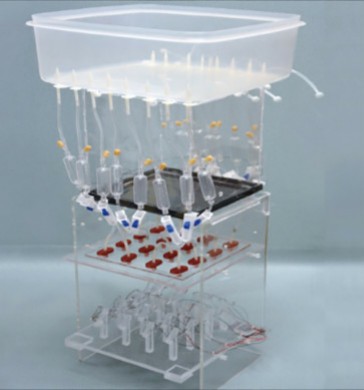LIGHT UP YOUR HOUSE WHENEVER IT'S RAINING WITH THIS MECHANISM
If elaborated, this new technology might make umbrellas everyone's favorite power bank.
A group of scientists has designed a tiny, yet highly efficient
electricity generator which can create enough power to light up 100 LED light bulbs with a single drop of tap, rain or seawater.
Currently, we depend on rain falling at high altitudes and collecting into rivers to reach masses large enough to make turbine harvesting efficient. While 70% of Earth’s surface is covered by water, low-frequency kinetic energy that is contained in it is not efficiently converted into electrical energy due to technological limitations.
 |
| Advertisement click for more info |
However, this new study shows that we can use the energy of the falling drops directly. The scientists demonstrated the generator’s potential power by dripping water drops onto a polytetrafluoroethylene film over an indium tin oxide substrate. The water spreads across the film and connects aluminum electrodes. This is what makes the charges built up in the film flow as electricity.
Professor Wang Zuankai, who is one of the leads, claims, “Our research shows that a drop of 100 microlitres (1 microlite = one-millionth liter) of water released from a height of 15 cm (6 inches) can generate a voltage of over 140V.”
The mechanism's structure is like a field-effect transistor (FET) which allows for high energy-conversion efficiency. This way, the power density is increased than its counterparts without the structure.
The best part is that the scientists have calculated that they are converting 2.2 percent of each drop’s kinetic energy into electricity. This means that this new improvement might be the tip of the iceberg.
 |
| Advertisement click for more info |
Wang furthers his statement by saying that the new technology could be applied on different surfaces where liquid hits the solid. This means that the surface of ferries, umbrellas and even water bottles might be used to utilize the low-frequency kinetic energy in water.
The technology has obstacles to overcome such as the electrode corrosion, however, Wang hopes that within five years the
technology will move beyond the labs.






Comments
Post a Comment
🍸🍸🍹🍹